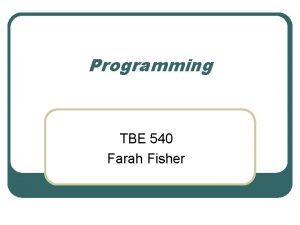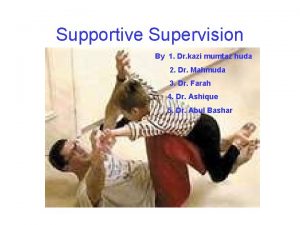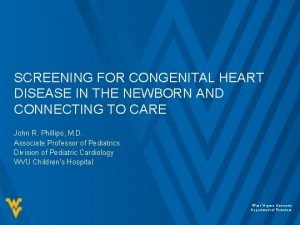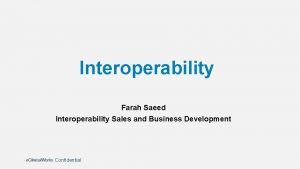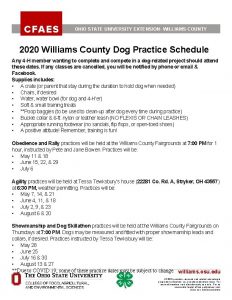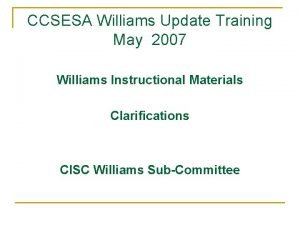Farah Williams Melinda Schmidt University of Virginia We


















- Slides: 18

Farah Williams & Melinda Schmidt University of Virginia We would like to thank the William T. Grant Foundation, Spencer Foundation, and the National Institute of Mental Health for funding provided to Joseph P. Allen, Principal Investigator, for the conduct and write-up of this study. Poster presented at the biennial meeting of the Society for Research on Adolescents, Baltimore, MD, March, 2003. The authors can be reached at farah@virginia. edu or mgs 2 k@virginia. edu

Abstract This study examined the relationships among early sexual involvement and father-teen autonomy and relatedness, attachment style, and psychological control. Multi-reporter data were collected from a sample of 113 adolescents and their fathers. Of the 113 adolescents, 32 self-reported having engaged in sexual activity by the end of the 3 rd year of data collection. To assess the quality of their relationships with their father, adolescents were interviewed using the Adolescent Attachment Interview. Teens were also administered the Childhood Report of Parenting Behavior (CRPBI; Schaefer, 1965). Additionally, each adolescent and his/her father participated in an eight-minute videotaped discussion of a disagreement. These interactions were then coded using the Autonomy and Relatedness Observational Coding Scheme (AR; Allen Hauser, Bell, Boykin, & Tate, 1996). Logistic regressions were conducted to examine the predictability of young teens sexual involvement based on their autonomy and relatedness and attachment relationships with their fathers. Results revealed significant predictors of teen’s risk for sexual involvement within the father-teen relationship.

Introduction Recent survey data showed that nationally 25% of 15 -year-old-girls and 27% of 15 -year-old-boys have already had intercourse (Moore, Driscoll, & Lindberg, 1998). These rates range from 24 to 68%, depending on race, ethnicity, and gender (Porter, Oakley, Guthrie, & Killion, 1999). Although it has been shown that the presence of both parents is associated with lower likelihood of adolescents engaging in sexual intercourse, little is know about the influence of negative father -teen relationships on teen’s early sexual involvement. Autonomy & Relatedness Allen, Aber, & Leadbeater (1994) proposed that adolescent problem behaviors are influenced by the familial context in which adolescents strive for autonomy. Unmet needs for autonomy and relatedness within the family promote emotional detachment from parents and thus the early initiation of health risk behaviors. Parental support of adolescent autonomy, such as encouraging he expression of opinions and avoiding overprotection, has been found to be inversely related to sexual behavior ( Turner, Irwin, Tschann, & Millstein, 1993).

Introduction Attachment Researchers have found that working models of attachment relationships with parents may set the stage for behaviors in later romantic relationships (Cohn, Silver, Cowan, & Pearson, 1992) Additionally, insecure attachment organization has been suggested to mark problematic ongoing difficulties in relationships with parents that make it difficult for the adolescent to move freely beyond these relationships to establish successful new relationships with peer or romantic partners (Allen, Moore, Kuperminc, & Bell, 1998) Psychological Control Initial research suggests that parents that use psychological control (coercion and love withdrawal) have children who may fail to achieve autonomy and relatedness, leading to future behavior problems (Nelson & Crick, 2002).

Research Questions Are adolescents with fathers who undermine autonomy and relatedness more likely to engage in sexual activity at an early age? Does an insecure parent-teen attachment style predict early engagement in sexual activity? Does fathers’ use of psychological control predict teens’ early sexual activity?

Methods Participants Multi-reporter data were collected from a sample of 113 adolescents (55 males, 58 females) and their fathers. Of the 113 adolescents, 32 (21 males, 11 females) selfreported having engaged in sexual activity by the end of the 3 rd year of data collection (age range 12 -16 years). Adolescent Race/Ethnicity (self-identified) Caucasian 66% African American 22% Other Minority Group 12% Family Income Mean $30, 000 - $39, 999 per year (range > $5, 000 - <$60, 000)

Measures Adolescent Attachment Interview (AAI). Adolescents were interviewed with the Adolescent Attachment Interview by Carlson (1989) for use with adolescents. A semi-structured interview was administered to investigate adolescents’ attachment representation by probing for descriptions of early attachment relationships and specific memories which support and contradict these descriptions (Main, Kaplan, & Cassidy, 1985). Adolescents were administered the AAI when they were in the 9 th grade.

Autonomy & Relatedness Observational Coding Scheme (AR). Each father-teen dyad participated in an 8 minute videotaped revealed differences task, discussing a family issue on which they previously indicated disagreement. Typical topics included money, grades, household rules, friends and siblings. Two trained coders used both transcripts and videotapes to code interactions on behaviors promoting/exhibiting and inhibiting autonomy and relatedness. Past research has found this coding system to be a reliable predictor of both family and adolescent functioning (Allen, Hauser, Bell, & O’Connor, 1994).

Childhood Report of Parenting Behavior (CRPBI). The original version of the CRPBI (Schaefer, 1965) contained 26 scales with 10 items per scale. Schludermann and Schludermann (1970) shortened the CRPBI first to 108 items (18 scales; 5 or 8 items per scale) based on the validity and reliability of the items. The scale was factor analyzed and consistently found 3 factors: Acceptance/Rejection; Psychological Control/Psychological Autonomy; and Firm/Lax Control. This study used the shortened-30 item instrument, with the same three major dimensions (Schludermann & Schludermann, 1988).

Results Table 1 shows autonomy and relatedness in the father-teen relationship as predictors of adolescents’ early sexual activity. Autonomy & Relatedness Taking into account age, gender, and minority status, fathers who undermine autonomy and relatedness in interactions with their teens have teens who are more likely to engage in early

Results Table 2 shows adolescents’ attachment style and fathers’ use of psychological control as predictors of early sexual activity. Secure Attachment Adolescents with less secure attachments were more likely to engage in sexual behavior at an early age. Psychological Control Adolescents who reported that their fathers use psychological control were more likely to engage in early sexual activity.

Table 1. Father/teen autonomy and relatedness as statistical predictors of teens’ early sexual activity

Table 2. Attachment style and teen report of father’s psychological control as statistical predictors of teens’ early sexual activity

Conclusions Our results indicated a clear association between negative father-adolescent relationships and early adolescent sexual involvement. Autonomy & Relatedness Adolescents who have fathers that are rated higher in undermining autonomy and relatedness are more likely to engage in sexual behaviors at a young age.

Conclusions Parent-Child Attachment It appears that parents may affect adolescent sexuality through their influence on their teen’s attachment style. Teens who were found to be less securely attached were at greatest risk for early involvement in sexual relationships. Father’s Psychological Control Teens who report their father’s as engaging in more psychologically controlling behaviors are more likely to engage in sexual behaviors at a young age. In sum, the quality of father-teen relationships may be a more important predictor of teens’ early sexual activity than simply fathers’

Future Directions Investigate the aspects of a positive relationships with mothers that might buffer the negative effects of father-teen relationships. Investigate the positive aspects of peer relationships that may buffer negative effects of poor father-teen relationships.

References Allen, J. P. , Hauser, S. , Bell, K. L. , Boykin, K. A. , & Tate, D. C. (1996). Autonomy and relatedness coding system manual. Unpublished manuscript. University of Virginia, Charlottesville, VA. Allen, J. P. , Hauser, S. T. , Bell, K. L. , and O'Connor, T. G. (1994). Longitudinal assessment of autonomy and relatedness in adolescent-family interactions as predictors of adolescent ego development and self-esteem. Child Development, 65, 179 -194. Allen, J. P. , Leadbeater, B. J. , & Aber, J. L. (1994). The development of problem behavior syndromes in at-risk adolescents. Development and Psychopathology, 6, 323 -342. Allen, J. P. , Moore, C. M. , Kuperminc, G. P. , & Bell, K. L. (1998). Attachment and adolescent psychosocial functioning. Child Development. 69, 1406 -1419. Carlson, E. A. (1989). Individual differences in quality of representational organization of attachment of high risk adolescent mothers. Unpublished doctoral dissertation, Columbia University, New York. Cohn, D. A. , Cowan, P. A. , Cowan, C. P. , & Pearson, J. (1992). Mothers’ and fathers’ working models of childhood attachment relationships, parenting styles, and child behavior. Developmental Psychology, 27 (4), 597 -605. Main, M. , Kaplan, N. , & Cassiday, J. (1985). Security in infancy, childhood, and adulthood: A move to the level of representation. In I. Bretherton & E. Waters (Eds. ), Monographs of the Society for Research in Child Development, 59 (Serial No. 209, pp. 66 -104).

References Moore, K. A. , Driscoll, A. K. , & Lindberg. (1998). A statistical portrait of adolescent sex, contraception, and childbearing. Washington, DC: National Campaign to Prevent Teen Pregnancy. Nelson, D. A, & Crick, N. R. (2002). Parental psychological control: Implications for childhood physical and relational aggression. In B. K. Barber (Ed. ), Intrusive parenting: How psychological control affects children and adolescents (pp. 161 -189). Washington, DC: American Psychological Association. Porter, C. P. , Oakley, D. J. , Guthrie, B. J. , & Killion, C. (1999). Early Adolescents’ Sexual Behaviors. Issues in Comprehensive Pediatric Nursing, 22 129 -142. Schaefer, E. S. (1965). Children’s report of parental behavior: An inventor. Child Development, 36, 413 -424. Schludermann, E. & Schludermann, S. (1970). Replicability of factors in children’s reports of parent behavior (CRPBI). Journal of Psychology, 76, 239 -249. Schludermann, E. & Schludermann, S. (1998). Notes of the CRPBI-30. Unpublished document, Department of Psychology, University of Manitoba, Canada. Turner, R. A. , Irwin, C. E. , Tschann, J. M. , & Milstein, S. G. (1993). Autonomy, Relatedness, and the Initiation of Health Risk Behaviors in Early Adolescence. Health Psychology, 12 (3). 200 -208.
 Farah williams
Farah williams Verna case study
Verna case study Andy williams robert williams
Andy williams robert williams Robbie williams janet williams
Robbie williams janet williams Dr farah jameel
Dr farah jameel Farah bennani
Farah bennani Silly farah insect
Silly farah insect Low level debugging
Low level debugging Farah fisher
Farah fisher Farah pays a $25 signup fee
Farah pays a $25 signup fee What is supervision
What is supervision Farah huzair
Farah huzair Congenital heart disease pda
Congenital heart disease pda Dr farah saeed
Dr farah saeed Farah kabir
Farah kabir Mo farah refugee
Mo farah refugee Farah raad
Farah raad Michele farah
Michele farah Farah noor adams
Farah noor adams








